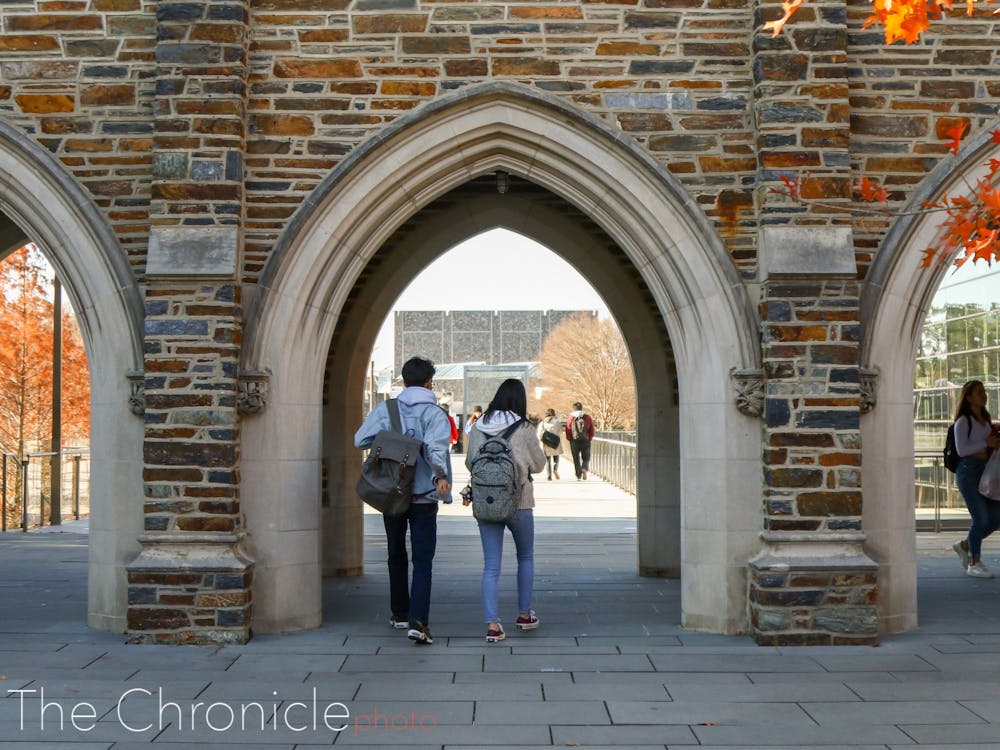After distributing nearly $22,000 in aid to members of the Duke community, the students behind Duke Mutual Aid are currently restructuring their model, according to sophomore Lily Levin, one of the students leading the effort.
Duke Mutual aid began as a Facebook group, created on March 13, designed as a centralized platform to post information and resources to help students who were struggling to find housing, transportation and food. In the early days of the account, Levin began collecting and distributing funds to community members through her personal Venmo account.
“The Venmo was originally just going to be for students who needed assistance for housing and transportation and financial assistance. But then workers started requesting funds too, and some community members. I wasn’t in a place to turn them away,” Levin said.
She explained that when Duke created its Student Assistance Fund, with an initial commitment of $4 million, Duke Mutual Aid directed students there because of its larger pool of resources. Duke Mutual Aid then became more focused on fulfilling requests by workers and community members, as well as any students whose requests were rejected by the Student Assistance Fund.
Ultimately, 68% of the funds were distributed to students, 24.6% to workers and 7.4% to community members, according to Levin. Most of the funds were donated by individuals, but selective living groups Illyria, Maxwell and Brownstone also donated significant sums of money.
Both Levin and senior Jamal Burns, another student who is heavily involved in the mutual aid effort, described the Facebook group and Venmo fund as “reactionary” efforts to solve immediate problems.
“Because it was so reactionary, it kind of resembled more charity than solidarity, which is not what mutual aid should be. It was more transactional—I was giving funds to people and that was the end of the relationship,” Levin said.
Since April 20, the group has been focusing their efforts on remodeling their approach to mutual aid, according to Levin.
Levin explained that the best way for the assistance fund to continue to exist will be for the group to find a fiscal sponsorship. “Otherwise, there’s no way to create an unincorporated bank account that has no tax implications,” she said. The students in the group prefer this solution to creating a nonprofit, because they want to avoid creating a top-down structure, which Levin explained would defeat the purpose of the mutual aid model.
A fiscal sponsorship would mean that an existing nonprofit would take on the fund with their bank account, and then the Mutual Aid group would have to pay the nonprofit a percentage of the funds they raised, Levin said. She is currently in discussions with one potential sponsor, but trying to connect with others who are involved in Durham justice work.
Levin said that another change the group hopes to implement is the creation of an E-list, which will allow potential donors to have some power in selecting whom they wish to send funds. People who request funds would consent to sharing certain demographic information, while remaining anonymous, and potential donors would have access to that information to help them decide to whom to donate.
Levin acknowledged that the details of that system have not yet been worked out, but hopes that it will help emphasize the relationship-building aspect of mutual aid. She also explained that it would be an attempt to help eliminate the power dynamic that initially existed between the students distributing the funds and those requesting them.
Burns said the students running Duke Mutual Aid also hope to make the organization more transparent. He said a potential solution is a community forum that allows people to discuss the transactions the group facilitates.
The group also hopes to focus more energy on community-building, Burns said. The Duke Mutual Aid Social Group, which will put students in groups with three to four others to combat increased isolation amidst the pandemic, is one attempt at that, according to a Facebook post announcing its creation.
Both Levin and Burns expressed that the restructuring of the Duke Mutual Aid is still in its discussion phase and that the student leaders have not made final decisions regarding the future of the organization.
“We’re still discussing and really thinking,” Burns said. “I think it’s difficult to make these distinctions. Being open to critique is what we’re trying to center our practices on now.”
Both students also stressed that they plan to continue working on Duke Mutual Aid even after the coronavirus crisis quiets down.
“This doesn’t stop after COVID-19,” Levin said. “It should be something that is in place whenever people need to access it.”
Get The Chronicle straight to your inbox
Signup for our weekly newsletter. Cancel at any time.

Anna Zolotor is a Trinity senior and recruitment chair for The Chronicle's 118th volume. She was previously news editor for Volume 117.

